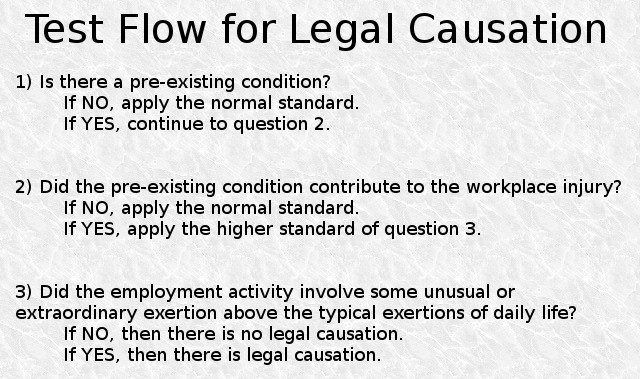- Free Consultation: 801-810-7673 Tap Here to Call Us
The Allen Rule in Utah Workers’ Compensation
The Allen Rule (aka Allen Defense, or Allen Standard) in workers’ compensation refers to how claimants who suffer from a pre-existing condition that contributes to a work injury must prove the workplace incident involved “unusual or extraordinary exertion.” In other words, Utah courts apply a higher standard to cases for those who have a history of injury or illness similar to the one in the workers’ comp claim.
One of the common issues people face in workers’ compensation cases is the matter of pre-existing conditions. How much will officials consider them to be the primary cause of an injury or illness? If an employee claims that pain in his arm is due to the work he performs on the job, the employer’s insurance company will likely examine the worker’s medical history. If the employee broke his arm in a biking accident a year prior, for example, his workers’ comp case may be tougher to prove. That does not mean he has no right to make a claim, however—nor does it mean he has no chance of winning his case.
The Higher Standard of the Allen Rule
The normal standard for workers’ comp cases is that usual or ordinary exertion, so long as it is part of the employee’s duties, is enough to show legal cause. But under the “Allen Rule,” the higher standard applied for workers’ comp cases is that if the employee suffers from a relevant pre-existing condition, then he must show that his duties at work involved some unusual or extraordinary exertion above the usual wear and tear of life outside work. The higher standard of the Allen Rule is not met by simply having a pre-existing condition. It must contribute to the work injury itself.

Allen v. Industrial Commission
This case Robert A. Allen v. Industrial Commission refers to an incident in which Mr. Allen suffered a herniated disc while lifting milk crates at the grocery store he worked at as a night manager. What complicated his case was his pre-existing medical condition: a history of multiple back injuries. The Industrial Commission argued that the back injury of the claim did not meet the statutory definition of an “accident.” But after the administrative law judge denied Mr. Allen’s claim, the Supreme Court of Utah reversed the decision. In the proceedings that followed, the court determined that injured workers with relevant pre-existing conditions must prove two things:
- Legal Cause — the workplace duty in question must involve unusual or extraordinary exertion (the exertion must be greater than that undertaken in normal, everyday life)
- Medical Cause — there needs to be a clear link medically between the exertion of the workplace duty and the injury of the claim
To give an example, lifting a single ordinary box would potentially not be considered unusual or extraordinary exertion. Lifting a particularly heavy or unwieldy one would make for a stronger claim. (Or, alternatively, lifting many of the ordinary boxes repeatedly throughout the shift.)
The Presence of a Pre-Existing Condition
A purpose of the Allen Rule is to eliminate workers’ comp claims for impairments that are the result of injury or illness caused outside of the workplace. The first question to ask then in all this: Is there a pre-existing condition? The higher standard of the Allen Rule does not have to be met if there isn’t a pre-existing condition related to the workplace injury or illness.
The Pre-Existing Condition’s Effect on the Work Injury
If there is a pre-existing condition, then continue to the second question: Did the pre-existing condition contribute to the workplace injury? For example, in the event of a heart attack while on the job, a worker with no past history of heart disease would have a stronger case than a worker with pre-existing heart conditions, proven by medical records stating those pre-existing conditions contributed greatly to the heart attack.

The Amount or Type of Exertion Involved in the Work Injury
If the claimant suffers from a pre-existing condition that contributes to the workplace injury, there is a final condition to meet. The third question: Did the employment activity involve some unusual or extraordinary exertion above the typical exertions of daily life? Workers’ comp officials must determine first what precisely were the work-related activities of the injured employee. Second, they must decide whether those activities amounted to unusual or extraordinary exertion. The court may consider climbing a single-story stairway to be the sort of everyday exertion people do outside of work. But climbing such a stairway repeatedly many times a day, on the other hand, would have a greater chance of being deemed unusual or extraordinary exertion. If you answer the third question with a “yes,” then we can say there is legal causation—it satisfies the Allen Rule.
If you suffer a workplace injury or illness and have a related pre-existing condition, contact Rose Legal to speak with an experienced attorney regarding the matter. Even with a pre-existing condition, you may have a stronger case than you expect.







